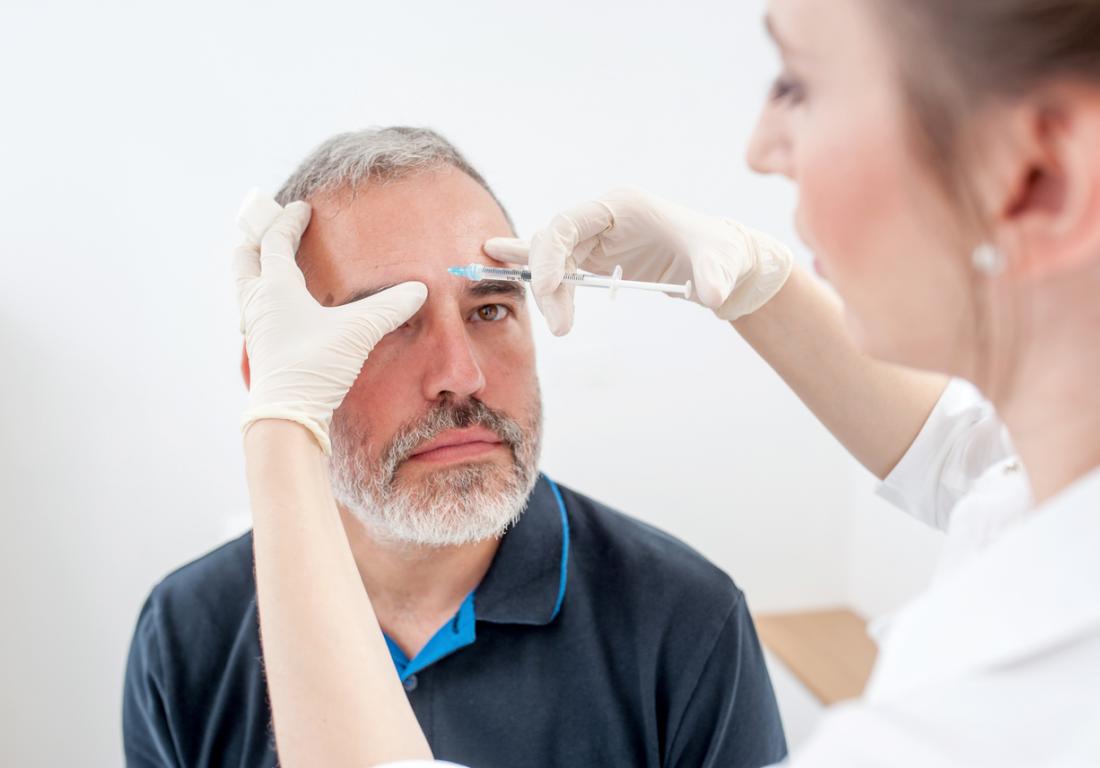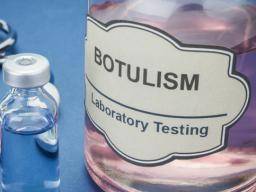Botox is used medically to treat certain muscular conditions, and cosmetically to remove wrinkles by temporarily paralyzing muscles. It is made from a neurotoxin called botulinum toxin that is produced by the bacterium Clostridium botulinum.
Although Botox is a powerful poison, when used correctly, it has a number of applications.
In this article, we will explain how it works, what Botox is used for, and talk about any side effects and dangers.
Fast facts on Botox:
- Botox is the most popular non-surgical cosmetic treatment, with more than 6 million Botox treatments administered each year.
- Botox is a neurotoxin derived from Clostridium botulinum, an organism found in the natural environment where it is largely inactive and non-toxic.
- Botulinum toxin is used to reduce fine lines and wrinkles by paralyzing the underlying muscles.
- People also use Botox to treat excessive sweating, migraines, muscular disorders, and some bladder and bowel disorders.
- Botulism, an illness caused by botulinum toxin, can cause respiratory failure and prove deadly.
- Just 1 gram of botulinum toxin could kill over 1 million people. Two kilograms could kill the entire human population of Earth.
What is Botox?

Botox injections have a range of medical uses.
Clostridium botulinum, the bacterium from which Botox is derived, is found in many natural settings, including soil, lakes, and forests.
The bacterium can also be found in the intestinal tracts of mammals and fish and in the gills and organs of crabs and other shellfish. Such naturally occurring instances of Clostridium botulinum bacteria and spores are generally harmless. Problems only arise when the spores transform into vegetative cells and the cell population increases. At a certain point, the bacteria begin producing botulinum toxin, the deadly neurotoxin responsible for botulism.
Neurotoxins target the nervous system, disrupting the signaling processes that allow neurons to communicate effectively.
Function
Botulinum toxin is one of the most poisonous substances known to man. Scientists have estimated that a single gram could kill as many as 1 million people and a couple of kilograms could kill every human on earth. In high concentrations, botulinum toxin can result in botulism, a severe, life-threatening illness. Botulism, left untreated, may result in respiratory failure and death. Despite botulinum toxin being so toxic, Botox is in huge demand.
Despite this, botulinum toxin has proven to be a successful and valuable therapeutic protein.
Botulinum toxin can be injected into humans in extremely small concentrations and works by preventing signals from the nerve cells reaching muscles, therefore paralyzing them.
In order for muscles to contract, nerves release a chemical messenger, acetylcholine (a neurotransmitter), at the junction where the nerve endings meet muscle cells. Acetylcholine attaches to receptors on the muscle cells and causes the muscle cells to contract or shorten.
Injected botulinum toxin prevents the release of acetylcholine, preventing contraction of the muscle cells. Botulinum toxin causes a reduction in abnormal muscle contraction, allowing the muscles to become less stiff.
Uses

Botox is most commonly used for cosmetic purposes to improve the appearance of fine lines and wrinkles.
Botulinum toxin is predominantly used as a treatment to reduce the appearance of facial wrinkles and fine lines.
Beyond aesthetic applications, Botox is used to treat a variety of medical conditions, including eye squints, migraines, excess sweating, and leaky bladders.
Botulinum toxin is currently used to treat over 20 different medical conditions, with more applications under investigation.
Botulinum toxin is currently approved for the following therapeutic applications:
- Blepharospasm (spasm of the eyelids).
- Idiopathic rotational cervical dystonia (severe neck and shoulder muscle spasms).
- Chronic migraine.
- Severe primary axillary hyperhidrosis (excessive sweating).
- Strabismus (crossed eyes).
- Post-stroke upper limb spasticity.
- Detrusor (bladder wall muscle) overactivity – causing urinary incontinence.
- Overactive bladder.
- Hemifacial spasm.
- Glabellar lines (frown lines between the eyebrows).
- Canthal lines (crow’s feet).
Botulinum toxin is also used off-label (not approved) for:
- Achalasia (an issue with the throat that makes swallowing difficult).
- Anal fissure and anismus (dysfunction of the anal sphincter).
- Sialorrhea (producing too much saliva).
- Allergic rhinitis (hay fever).
- Sphincter of oddi (hepatopancreatic) dysfunction (causes abdominal pain).
- Cerebral Palsy.
- Oromandibular dystonia (forceful contraction of the jaw, face, and/or tongue).
- Laryngeal dystonia (forceful contraction of the vocal cords).
Botulinum toxin is sold commercially under the names:
- Botox, Vistabel, Botox cosmetic (OnabotulinumtoxinA or botulinum toxin type A)
- Dysport (AbobotulinumtoxinA or botulinum toxin type A)
- Bocouture, Xeomin (IncobotulinumtoxinA or botulinum toxin type A)
- Myobloc (RimabotulinumtoxinB or botulinum toxin type B).
Procedure
Botulinum toxin is administered by diluting the powder in saline and injecting it directly into neuromuscular tissue. It takes 24-72 hours for botulinum toxin to take effect. In very rare circumstances, it may take as long as 5 days for the full effect of botulinum toxin to be observed.
Botulinum toxin should not be used in pregnant or lactating women, or by people who have had a previous allergic reaction to the drug or any of its ingredients.
Risks and side effects

Possible side effects of a Botox injection include migraines, nausea, double vision, and general malaise.
Injections with botulinum toxin are generally well tolerated and there are few side effects. In rare cases, an individual may have a genetic predisposition that results in a mild, transient unusual response to the drug.
Around 1 percent of people receiving injections of botulinum toxin type A develop antibodies to the toxin that make subsequent treatments ineffective.
Along with its intended effects, botulinum toxin may cause some unwanted effects. These can include:
- Mild pain, local edema (fluid buildup) and/or erythema (reddening of the skin) at the injection site.
- Numbness.
- Headache.
- Malaise – feeling generally unwell.
- Mild nausea.
- Temporary unwanted weakness/paralysis of nearby muscles.
- Temporary upper lid or brow ptosis (drooping).
- Weakness of the lower eyelid or lateral rectus (a muscle controlling eye movement).
- Dysphagia – trouble swallowing.
- Neck weakness.
- Flu-like illness.
- Brachial plexopathy – a condition affecting the nerves either side of the neck and chest.
- Gallbladder dysfunction.
- Diplopia (double vision).
- Bleeding.
- Blurred vision.
- Decreased eyesight.
- Dry mouth.
- Fatigue.
- Hives.
- Rashes.
- Wheezing.
- Swelling.
Botulinum toxin’s popularity continues to increase, with cosmetic minimally-invasive botulinum toxin type A procedures up 700 percent since 2000, to 6.3 million in 2013.
Why Botox Should Be Part of Your Beauty Routine
The obvious signs of aging
One of the first signs that you’re getting older often appears around your eyes. Those little lines that spread out from your eyes, known as crow’s feet, can make you look tired and age you prematurely.
You’re also susceptible to developing deep-set wrinkles in your brow area from years of squinting and smiling. These wrinkles and creases are often one of the first things people notice about you, which can affect your confidence and satisfaction with your appearance.
People often consider starting anti-aging treatments as early as their 30s, when collagen production starts to slow down and skin starts to lose its youthful glow, to stay proactive about their skin’s health.
How Botox delays the signs of aging
Botox is an innovative injection therapy made from the botulinum toxin, a purified bacterium, that temporarily paralyzes the muscles responsible for frown lines and crow’s feet. Botox works by interfering with the nerve signals that cause muscles to contract.
Following a Botox injection, these muscles relax and smooth out to reduce the appearance of even deep-set creases and lines.
Botox isn’t a filler. Rather, it addresses the root cause of your crow’s feet and forehead lines. Results of Botox injections can last for several months, ensuring that you maintain a fresh, vibrant look.
Dr. Metelitsin will design a custom treatment plan to address the specific areas that leave you unhappy with your appearance. Her skilled technique will ensure that your treatment is safe and comfortable and that your results look completely natural.
How Does It Feel?
A Botox treatment is usually painless, quick and simple. The provider will execute multiple injections towards a treatment area, and then you are free to go.
But the experience is dependent on the provider. As mentioned above, make sure to go with a qualified practitioner who will take care of you, and not just quickly make a couple of bucks.
Physical Side-Effects
Most patients share that there was very minimal pain. There can certainly be some swelling, bruising and redness – but a proper treatment guarantees a quick resolve.
It’s quite similar to a flu shot, where there will be some tenderness, but it will quickly subside.
It should be gone by the time you leave the clinic.

